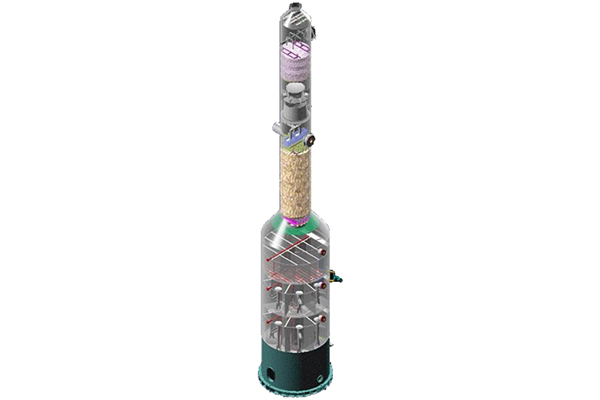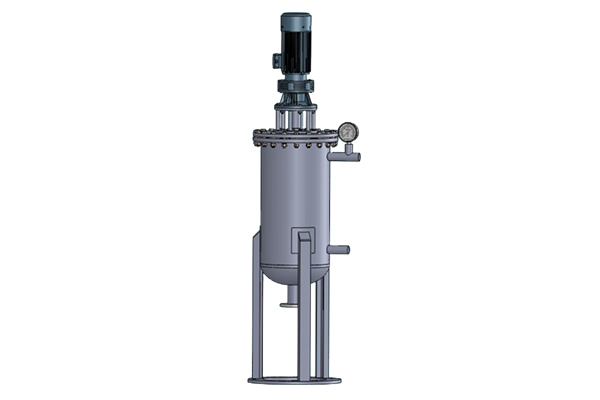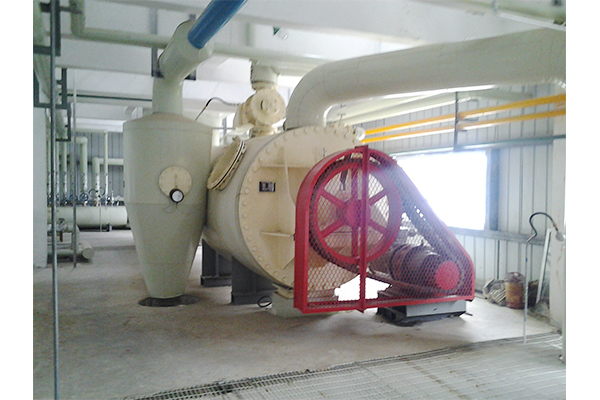Why has the wet collector become a key equipment for gas purification in the chemical and food industries?
Release Time : 2025-06-10
In modern chemical and food processing industries, waste gas containing particulate matter is often generated during the production process. If these waste gases are directly discharged, they will not only affect product quality, but may also pollute the environment. Therefore, how to efficiently separate and treat these waste gases containing particulate matter has become one of the major challenges faced by enterprises. As an efficient gas purification equipment, the wet collector is gradually becoming the preferred solution for many companies with its excellent separation efficiency, wide applicability and significant environmental benefits.
First of all, the wet collector has extremely high separation efficiency. It introduces dust-containing gas into the washing liquid, and uses the inertial collision, interception and diffusion between droplets and particles to capture and settle the particles by the liquid, thereby achieving gas-liquid separation. Compared with traditional dry dust removal methods, the wet collector can remove tiny particles more effectively, and has a good removal effect on fine dust with a diameter of less than 1 micron, ensuring that the exhaust gas meets strict environmental standards.
Secondly, the equipment is highly adaptable and suitable for a variety of working conditions. Whether it is high temperature, high humidity or corrosive gas environment, the wet collector can operate stably. For example, acidic or alkaline waste gas generated in the chemical production process can be neutralized by adjusting the pH value of the washing liquid to avoid corrosion damage to the equipment; in the food processing industry, due to the need to maintain high hygiene standards, wet collectors can use sterile water as a washing medium to prevent secondary pollution.
In addition, wet collectors have outstanding performance in environmental protection. With the increasing global attention to environmental protection, countries have introduced more stringent emission regulations. The use of wet collectors can not only effectively reduce particulate emissions and reduce the risk of air pollution, but also recycle valuable materials. For example, in some chemical reactions, some incompletely reacted raw materials may escape with the tail gas. Through wet collectors, they can be re-dissolved in the washing liquid for recycling and reuse, which not only saves resources but also reduces production costs.
From the perspective of operation and maintenance, wet collectors have a relatively simple structure, are easy to operate and have low maintenance costs. Although the initial investment may be slightly higher than traditional equipment, due to its long-term stable and reliable operation and low failure rate, the overall cost of ownership is not high. At the same time, the cleaning process is also relatively simple, and only regular replacement or replenishment of the washing liquid is required to maintain good working condition.
It is worth mentioning that with the advancement of technology, new wet collectors are constantly emerging, such as spray towers and packed towers, which further optimize energy consumption indicators while improving separation efficiency. Some advanced designs are also equipped with automatic control systems, which can adjust operating parameters in real time according to actual working conditions to ensure the best treatment effect and meet the needs of different users.
In summary, wet collector has become an indispensable and important equipment for gas purification in chemical, food and other industries with its efficient separation ability, wide applicability, significant environmental benefits and low operation and maintenance costs. It not only helps companies improve product quality and reduce environmental pollution, but also makes positive contributions to sustainable development. Choosing a suitable wet collector is to inject greenness and efficiency into your production process, helping companies achieve a win-win situation of economic benefits and social responsibility in the fierce market competition.
First of all, the wet collector has extremely high separation efficiency. It introduces dust-containing gas into the washing liquid, and uses the inertial collision, interception and diffusion between droplets and particles to capture and settle the particles by the liquid, thereby achieving gas-liquid separation. Compared with traditional dry dust removal methods, the wet collector can remove tiny particles more effectively, and has a good removal effect on fine dust with a diameter of less than 1 micron, ensuring that the exhaust gas meets strict environmental standards.
Secondly, the equipment is highly adaptable and suitable for a variety of working conditions. Whether it is high temperature, high humidity or corrosive gas environment, the wet collector can operate stably. For example, acidic or alkaline waste gas generated in the chemical production process can be neutralized by adjusting the pH value of the washing liquid to avoid corrosion damage to the equipment; in the food processing industry, due to the need to maintain high hygiene standards, wet collectors can use sterile water as a washing medium to prevent secondary pollution.
In addition, wet collectors have outstanding performance in environmental protection. With the increasing global attention to environmental protection, countries have introduced more stringent emission regulations. The use of wet collectors can not only effectively reduce particulate emissions and reduce the risk of air pollution, but also recycle valuable materials. For example, in some chemical reactions, some incompletely reacted raw materials may escape with the tail gas. Through wet collectors, they can be re-dissolved in the washing liquid for recycling and reuse, which not only saves resources but also reduces production costs.
From the perspective of operation and maintenance, wet collectors have a relatively simple structure, are easy to operate and have low maintenance costs. Although the initial investment may be slightly higher than traditional equipment, due to its long-term stable and reliable operation and low failure rate, the overall cost of ownership is not high. At the same time, the cleaning process is also relatively simple, and only regular replacement or replenishment of the washing liquid is required to maintain good working condition.
It is worth mentioning that with the advancement of technology, new wet collectors are constantly emerging, such as spray towers and packed towers, which further optimize energy consumption indicators while improving separation efficiency. Some advanced designs are also equipped with automatic control systems, which can adjust operating parameters in real time according to actual working conditions to ensure the best treatment effect and meet the needs of different users.
In summary, wet collector has become an indispensable and important equipment for gas purification in chemical, food and other industries with its efficient separation ability, wide applicability, significant environmental benefits and low operation and maintenance costs. It not only helps companies improve product quality and reduce environmental pollution, but also makes positive contributions to sustainable development. Choosing a suitable wet collector is to inject greenness and efficiency into your production process, helping companies achieve a win-win situation of economic benefits and social responsibility in the fierce market competition.








